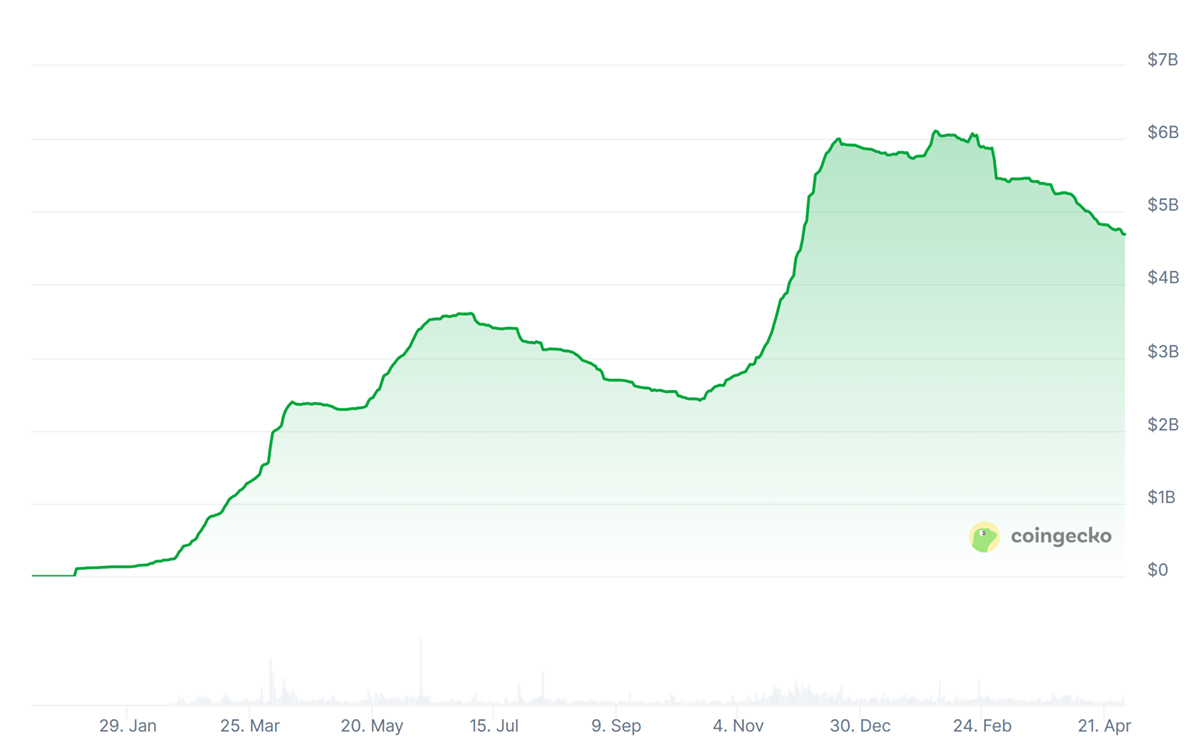Token Takeaway: ENA;
Ethena is a decentralised stablecoin issuer built on Ethereum, designed to offer attractive savings yields on its digital dollar. Despite launching only recently, it has seen explosive growth, rapidly attracting significant liquidity. However, its swift rise and the nearly 20% APY offered on its stablecoin have given the crypto industry flashbacks to Terra, which famously collapsed under similar promises. Is Ethena simply repeating the mistakes of the past, or has it built a more resilient system? This Token Takeaway will examine the inner workings of Ethena and evaluate the value proposition of its native token, ENA.
Overview
The inspiration for Ethena traces back to a blog post titled “Luna Brothers, Inc” by BitMEX founder Arthur Hayes. The blog post was published amid UST’s depeg and LUNA’s collapse in 2022, with Hayes proposing a decentralised stablecoin model designed to withstand volatility. This concept would eventually shape Ethena’s foundation. In July 2023, the protocol was formally introduced by Guy Young with a mission to build a fully decentralised, censorship-resistant, yield-bearing synthetic US dollar tailored for the internet economy. In essence, Ethena set out to create what could be described as an “Internet Bond”.
In less than two years, USDe, Ethena’s flagship stablecoin, has grown to a market cap of $4.7bn, positioning it alongside DAI. In fact, between December 2024 and March 2025, USDe briefly surpassed DAI in market capitalisation.
USDe Marketcap

Today, Ethena’s assets are available across 24 chains, with the ecosystem boasting over 682k users. Fuelling this explosive growth, Ethena has raised $156.8m in funding from some of the biggest names in the industry, including Dragonfly, MEXC, Franklin Templeton, and Pantera Capital.
Ethena’s Unique Selling Points
At the core of Ethena’s design is a bold goal: to create a digitally native, yield-bearing, stable US dollar that offers more reliability than even overcollateralised stablecoins, all while being fully decentralised.
Ethena allows users to mint USDe with 1:1 collateral, offering a new level of capital efficiency while maintaining full backing. But it doesn’t stop there; USDe is also yield-generating and effectively functions as a crypto-native savings account that’s accessible to anyone with an internet connection.
Before diving deeper into how Ethena achieves this, let’s take a step back and understand the flaws of previous decentralised stablecoin models and how Ethena addresses them head-on.
Learning from the Collapse of Terra
Terra’s UST was an algorithmic stablecoin that attempted to maintain its peg through a mint-and-burn mechanism with LUNA. On the surface, it promised innovation and even offered a staggering 20% APY via the Anchor Protocol, but under the hood, it was dangerously fragile. UST had no real backing; its high yields were artificially subsidised by the ecosystem’s treasury, not by real, sustainable yield sources.
When those subsidies dried up and APYs began to fall, confidence collapsed. Users began dumping UST, leading to a depeg. In response, the system incentivised users to burn UST and mint more LUNA to restore the peg, but this only accelerated the problem. LUNA’s supply hyperinflated, triggering a full-blown death spiral that erased $60bn in ecosystem value in just days.
The MakerDAO Model: Safer but Inefficient
On the other end of the spectrum, we have MakerDAO, the protocol behind DAI. Maker avoids algorithmic instability by overcollateralising DAI. The system typically requires at least $150 worth of ETH (or similar collateral assets) to mint $100 worth of DAI.
In practice, most users maintain a collateral ratio closer to 200%, as any dip in ETH price can lead to liquidations. This creates a problem: the system absorbs more liquidity than it emits, reducing capital efficiency. DAI also charges a stability fee (interest) for minting, which reduces net yield and serves as a peg-maintaining mechanism.
Additionally, most of DAI’s collateral today consists of ETH and its liquid-staked derivatives. When ETH underperforms, DAI’s stability is threatened. A drop in ETH price reduces collateral ratios, potentially leading to mass liquidations. In fact, the recent decline in ETH has brought many DAI loans at risk of liquidation. In such events, ETH could crash further, reinforcing the downward spiral; an eerily familiar pattern.
To Maker’s credit, it has been battle-tested, surviving Terra’s collapse, the FTX implosion, the fall of Celsius, SVB’s banking crisis, and the US regulatory clampdown under Gensler. It’s safe, yes. But is it optimal?
Ethena’s Breakthrough: Eliminating Collateral Volatility
What if the collateral ratio never moved, regardless of ETH’s price?
What if a stablecoin could maintain its peg without needing to be overcollateralised and without exposing users to the risks of liquidation due to volatility?
This is where Ethena comes in.
Ethena eliminates the key vulnerability in both algorithmic and overcollateralised models, i.e. volatility risk. By designing a system where USDe is always backed by market-neutral strategies, it ensures that the peg stays robust, no matter what ETH or BTC prices are doing.
It’s not just about making a better stablecoin; Ethena is rethinking how digital dollars should work in a decentralised world.






